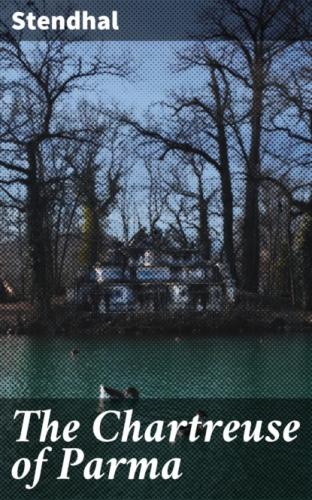Stendhal
The Chartreuse of Parma
Translated from the French of Stendhal (Henri Beyle)
Published by Good Press, 2019
EAN 4057664648044
Table of Contents
LIFE OF STENDHAL
Marie Henri Beyle, who called himself Stendhal, was born at Grenoble on the 23d of January, 1783. His father, Joseph Chérubin Beyle, was a lawyer and a member of the parliament of Dauphiné. His childhood and boyhood, excited by echoes of the Revolution, but repressed in the bosom of a royalist and conservative family, were turbulent and distressing; in later years Grenoble was to him “like the recollection of an abominable indigestion.” He escaped from it in 1799, and spent a short time in the War Office in Paris. In 1800 he went off to the wars, saw Italy for the first time, was present at the battle of Marengo, and fought his first duel at Milan. From 1801 to 1806 Beyle was in Paris and Grenoble, much occupied with affairs of the heart. In the latter year he entered Napoleon’s army, and remained in it until after the retreat from Moscow in 1814. He was made “intendant militaire,” and his zeal commended him to the Emperor. On one occasion, called upon to raise five million francs from a German state, Beyle produced seven millions. He seems to have been one of the few officers who kept their heads in the flood of disaster; during the retreat from Russia he was always clean-shaved and perfectly dressed. But the fatigues of 1814 shattered his health, and the ruin of Napoleon his hopes; he was obliged to withdraw to Como to recover his composure. He refused an administrative post in Paris under the new government, and settled definitely at Milan. His career of violent action had exhausted his spirits; he now adopted the mode of life of a dilettante. He gave himself up to music, books, and love. His first work, the “Letters Written from Vienna,” appeared in 1814; this essay, a musical criticism, was followed in 1817 by the “History of Italian Painting,” and “Rome, Naples, and Florence.” He became poor, and in 1821, being suspected of Italianism, was expelled from Milan by the Austrian police; he took refuge in Paris. Stendhal’s essay on “Love,” the earliest of his really remarkable books, was published in 1822, but attracted no attention whatever; in eleven years only seventeen copies of it were sold. His first novel, “Armance,” belongs to 1827. In 1830 he was appointed consul at Trieste, and while he was there the great novel, “Le Rouge et le Noir,” appeared in Paris without attracting any attention. Stendhal was so miserable at Trieste that he contrived to exchange his consulate for that of Civita Vecchia, which he held until he died. In spite of the complete and astonishing failures of each of his successive books, he continued to add to their number. He had but “one hundred readers” in all Europe, but these he continued to address. In 1838 he published a mystification, the supposed “Memoirs in France” of a commercial traveller. Stendhal did not taste literary success in any degree whatever until, in 1839, and at the age of fifty-six, he produced “La Chartreuse de Parme.” This novel gave him fame, but he did not long enjoy it. On the 23d of March, 1842, having reached his sixtieth year, he died in Paris, after a stroke of paralysis. He lies buried at Montmartre, under the epitaph, in Italian, which he had written for the purpose: “Here lies Arrigo Beyle, the Milanese. Lived, Wrote, Died.” The life of Stendhal was obscure and isolated throughout; but since his death he has excited boundless curiosity, and his influence has been steadily advancing. He said of himself that he could afford to wait, that he would certainly be appreciated in 1880. He proved himself a true prophet, for it was just forty years after his death that his reputation reached its highest pinnacle, and that, with the discovery
